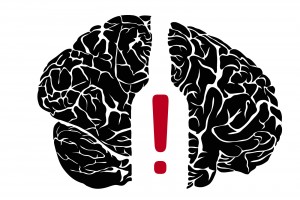Researchers are more and more concerned about an association between ultra-processed food and dementia. A new study found that when you consume more than 20% of you daily food intake as processed food, you can start developing cognitive decline. Eating just 2 cookies per day, which have about 100 calories, will lead to cognitive decline.
What is processed food?
Foods such as instant noodles, hot dogs and ice cream are not healthy. There is too much salt, sugar and unhealthy fat in them that undermine your health. If you consider breakfast granola as “healthy”, you’d better take a look at the ingredients: sugar is one of them! Frozen meals, sugary drinks, take-out pizzas, deep-fried chicken and French fries also belong to unhealthy foods. Unless you buy fresh ingredients and make your own Mediterranean-style meals, you will struggle staying healthy. Processed foods lead to weight gain, which is difficult to shed unless you give up processed food.
Processed food often contains flavorings, colorings or other additives. White bread and bakery products, fried snacks, crackers, cookies, ice cream, candy, cream cheese and processed cheese, soda and frozen meals fall into this category.
Conference in San Diego
At the 2022 Alzheimer’s Association International Conference in San Diego researchers revealed the results of a Brazilian study. 10,000 Brazilians were followed with dietary habits and intermittent cognitive tests for up to 10 years. In the beginning none of the participants had a cognitive deficit. The average age at the time of the beginning of the study was 51 years. When you eat more than 20 % ultra-processed food of your total calorie intake every day, cognitive decline is showing up on the cognitive tests. Specifically, patients who consumed more than 20% calories from ultra-processed food developed 28% faster decline in cognitive tests. They also developed 25% faster decline in executive functioning.
Comment from a co author
Co Author Dr. Claudia Suemoto, an assistant professor in the division of geriatrics at the University of São Paulo Medical School stated: “In Brazil, ultra-processed foods make up 25% to 30% of total calorie intake. We have McDonald’s, Burger King and we eat a lot of chocolate and white bread. It’s not very different, unfortunately, from many other Western countries”. She went on to say: “58% of the calories consumed by United States citizens, 56.8% of the calories consumed by British citizens, and 48% of the calories consumed by Canadians come from ultra-processed foods”. She expressed her concern that these statistics show that many more seniors than now will develop Alzheimer’s disease. In the Brazilian study researchers followed their subjects for up to 10 years. After decades of exposure to ultra-processed food the numbers of people with cognitive deficits and Alzheimer’s disease will be much higher.
Other means to prevent cognitive decline
A study showed that regular aerobic exercises (running, treadmill, walking) or stretching, balancing and range of motion exercises both prevented cognitive decline. The best is to build some form of exercise into your daily routine. This is particularly important for people who have desk jobs.
What are healthy foods to eat?
We need to eat more vegetables, fruit and cut out sugar, omit too many starchy foods, salt and unhealthy fats. So, how does that work? In the following I am giving examples of a healthy breakfast, lunch and dinner.
Breakfast
Start the day with fresh fruit, a bowl of rolled oats with milk or a milk alternative. Add a few almonds or chopped nuts or ground flaxseed. You could add raspberries, blackberries, strawberries or blueberries.
If you want a breakfast with egg, try an omelet with eggs or egg white with mushrooms, onions and chopped greens! No, it does not always have to be kale! Enjoy arugula or spinach. Add some salsa on the side.
For those who hate to prepare breakfast, take it easy: put 1/2 a banana, a cup of berries, 1 tablespoon almond butter and 3/4 cup of low-fat yoghurt into the blender. Blend at high speed. This takes less than 2 minutes. Enjoy! It does not get much easier than that.
Lunch
Assemble some mixed salad greens, 1 sliced tomato, 1 cup of sliced cucumber, half a sliced avocado and 1/2 shredded carrot on a plate or in a bowl. Add 2 slices of cheese or 2 tablespoons of crumbled feta cheese. Add one boiled and sliced egg or alternatively 4 slices of chicken breast. Make a dressing of 2 tablespoons of olive oil and 1 tablespoon of balsamic vinegar. You can prepare this easy lunch the evening before and take it to work.
If you want a warm lunch, cook a simple Italian-style vegetable soup. Sprinkle it with a tablespoon of grated parmigiano cheese and serve it with a slice of whole-grain bread. A vegetable chili is a good choice for a colder day. Have some fresh fruit for dessert.
Dinner
Make vegetables the main event. Do not have a huge steak with an afterthought of vegetables, but build a tasty meal around vegetables with a protein of your choice: lean meats, such as chicken breast, enjoy fish or other seafood or experiment with other protein sources, such as tofu. The latter works well in an Asian-style vegetable stir-fry. And otherwise: breaded and deep-fried chicken or battered fish are not healthy choices, even if you prepare the meal at home! Forget the breading and dip the meat into a tasty marinade instead! If you want to have a quick dessert, make a colorful fruit salad with a dollop of yoghurt on top. For all those who drool over a decadent dessert in a restaurant, go ahead and order that Tiramisu and share it with others of your party. But it should be an exception rather than a regular treat.
Conclusion
Researchers are more and more concerned about an association between ultra-processed food and dementia. A new study found that when you consume more than 20% of you daily food intake as processed food, you start developing cognitive decline. Eating just 2 cookies per day, which have about 100 calories, will lead to cognitive decline. It is fairly easy to cut out junk foods from your diet and to adopt healthy eating ha its.
Meal suggestions
Start the day with fresh fruit, a bowl of rolled oats with milk or milk alternative. Add a few almonds or chopped nuts or ground flaxseed. You could add raspberries, blackberries, strawberries blueberries. I sweeten everything with stevia extract and avoid sugar completely. For lunch you could have mixed salad greens with 2 slices of cheese or 2 tablespoons of crumbled feta cheese. Add one boiled and sliced egg or alternatively 4 slices of chicken breast. For dinner make vegetables the main event. Do not have a huge steak with an afterthought of vegetables, but build a tasty meal around vegetables with a protein of your choice: lean meats, such as chicken breast, enjoy fish or other seafood or experiment with other protein sources, such as tofu.
Final remark
You see, it is fairly easy to avoid ultra-processed foods that lead to cognitive decline. It involves a critical look at your current eating habits and very likely some cleaning-out of less than desirable foods from your pantry.















